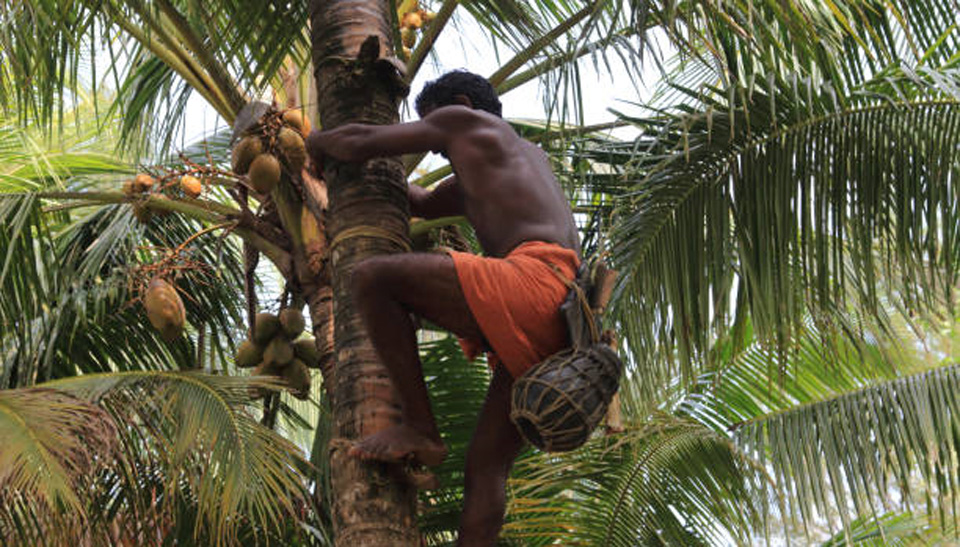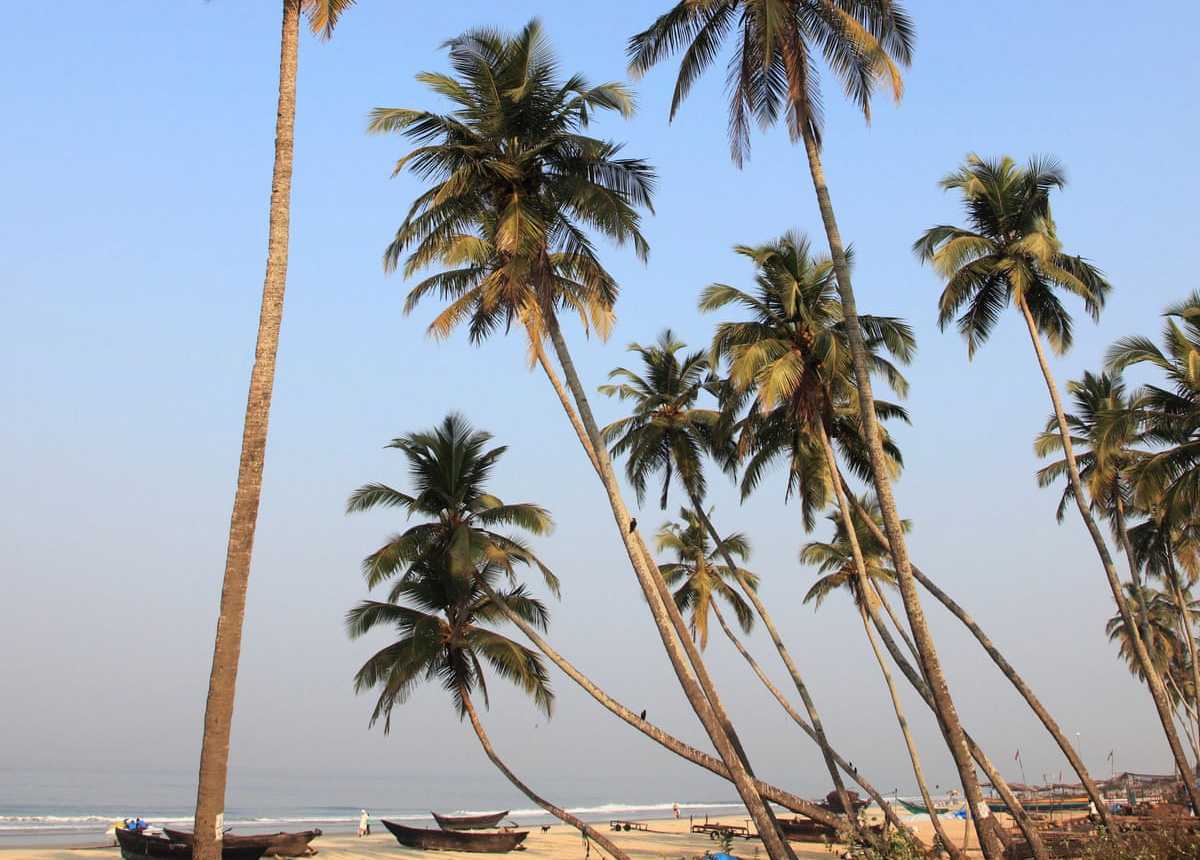As I was planting sweet pea last year, I noticed that, of the many sticks that we had used in the previous year as supports for the plants, three had actually sprouted themselves. Well, this was incredible: I mean, those sticks were almost-dead twigs, used simply as short frames along which the sweet pea could lean for support; and nevertheless, they had actually brought forth new life. Amazing! This was nothing short of the miraculous. I was once again reminded of the fecundity of nature. As the great poet Gerard Manley Hopkins wrote, after having described how we humans had become increasingly distant from, and hostile to, nature: “and for all this nature is never spent / There lives the dearest freshness deep down things”.
So I thought I’d put pen to paper regarding the richness of the Philippine soil and the great fruitfulness that the hard-working Filipino can bring from it, year after year. In a previous article entitled “Bayanihan” (= meitheal in Irish), I described the two basic crops for domestic consumption, rice and corn. I neglected to mention however one of the amazing natural wonders created by a tribe in the north of the country.

Because rice needs to be constantly irrigated, flat land is needed. But Filipino ingenuity has converted very hilly terrain into terraces of rice fields. It is truly a great achievement, a task requiring the correct level in each of the terraces, so that the water will slowly flow down from the highest to the lowest. The elevation of each terrace and the tiny adjustments in slope among the terraces, have to be exact so as to ensure that the irrigation is unimpeded. They were originally created 2000 years ago by a tribe called the Ifugao, in the northern island of Luzon. The end result is an amazing exhibition of human creativity, a panoply combining a marvel of engineering, precision design and natural beauty. Indeed, in 1995, the terraces were declared a UNESCO world heritage site, “a living cultural landscape of unparalleled beauty.”
There are other crops widespread in the Philippines; one is sugarcane. It is a crop with a decidedly shady connotation or background. With sugarcane, you need trucks to transport the cane to the factory, so it is almost inevitably the crop of the wealthy. And indeed, there are plantation of many hundreds of acres. Yet it must be said that the quality of life of the workers varies quite a bit, depending largely on the character of the owner and of his managers. Yes, there are some who are very caring about their workers and seek to see to their best interests. However, there are others where the living conditions are just a step above a hovel. Especially for migrant workers who travel from one island to the next to partake in the sugarcane harvest, they often have to endure primitive surroundings in “dormitories” or “bunk houses” no better than the standards suffered by Dickens’ Oliver.
Sugarcane takes nine months to mature; it grows to a height of about 9 or 10 feet, a long stalk with a thickness of about 3 inches, and leaves along the sides. To remove the leaves and somehow improve the strength of the sugar content, oftentimes the sugarcane plantation is deliberately torched before harvest. Harvesting is thus easier (no leaves to impede progress) but also extremely dirty, as the stalks are covered in ash. A large truck is parked near the field and the workers cut the cane using razor sharp machetes. They then carry as many stalks as they can to the truck, and ascend on what is for all the world like a gangplank. Another worker’s job is to arrange the canes so that the truck can be truly filled, no wasted space. Trucks can carry up to 22 tons.
The variety of fruits in the Philippines is truly amazing, but not at all unique in a tropical climate. Where does one begin to enumerate the choice, the lushness, the mesmerizing tastes, even the incandescent sheen on the fruits as they are piled high for buyers to survey them? The mango is the national fruit of the country, a most delicious food; one tree can produce up to 2000 fruits in a season. In olden days, the early buds would be encouraged by smoke emitted by fires lit at the base of the tree; nowadays it’s done by spraying various chemicals. Such is the fecundity of the mango tree, that parents can successfully send their children to school solely on the income from its plentiful harvest. It comes in two varieties, sweet and sour. The flesh of the former is yellow and can be exceptionally sweet; the latter is eaten more as an appetizer, flavoured with salt & soy sauce. Either is tantalizing, yet the more bitter variety is definitely an acquired taste.
Possibly the Filipino plant with the most uses is the coconut tree. Every single part, apart from the root, is used in various ways. The tree, which grows to the height of a telegraph pole, is ubiquitous on the islands and serves many purposes and answers many needs. The long fronds of the leafy branches are used for roofing (as we would use thatch); the wood from the trunk of the tree is used as a low-cost timber. But the actual fruit is amazingly prolific. On one coconut tree there may be upwards of 100 coconuts, grouped in bunches. Each coconut consists of an outer husk, an inner shell, and the meat/fruit inside. The outer husk, with a residue of coco-oil, is used to polish native floors (mahogany, teak, acacia), so as to bring up the sheen. The actual labour is done by placing a foot on the husk, and pacing up and down along the floorboards; the residue of oil in the husk brings a nice lustre to the floor (almost a forgotten skill at this stage).

A line of coconut trees; C: Colm Meaney
The inner shell is “fired” and then used as a high-quality kind of charcoal, extremely popular in the Philippines. The meat or flesh inside has two possible uses. As a young coconut, the flesh is soft and juicy and is scooped out to produce a very tasty snack (as in the Bounty bar). The older meat (inedible) is scooped out and dried, either under the sun or in kilns. Then it is transported to the factories where it is transformed into coconut oil.
Apart from all that, often the sap of the coconuts is tapped by the farmer, who shimmies up the tree to attach a container so as to catch the juice as it drops during the night. This is then collected in the morning; it will have begun to ferment during the night, so is now mildly alcoholic and quite sweet. As the hours pass the juice gets stronger and begins to lose its sweetness; this is a more satisfying drink for those who like a kick in their beverage. By the third day it has become vinegar, no longer potable on its own, but extremely popular as a condiment.
Such fruitfulness, such prodigality! No wonder the prophet Isaiah saw the Reign of God as a grand party, served with succulent meats and choice beverages! “On that mountain, the Lord Almighty will prepare a feast of rich food for all peoples, a banquet of aged wine – the best of meats and the finest of wines” (Isaiah 25:6). The abundance of the Philippine soil is a daily reminder both of the richness of the earth and the scandal of so many Filipinos not benefitting from it. The first we should rejoice in, the second we should seek to rectify.

Shining a wooden floor using a coconut husk. C: Colm Meaney